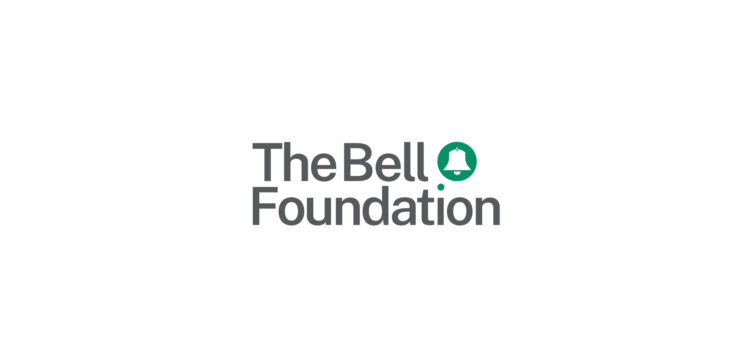Intervention Groups: Supporting Secondary EAL Learners Beyond the Classroom (Webinar)
- Date
- 16 May 2024
- Time
- 4:00pm
- Price
- Free
- Type
- Webinar
Explore our policy recommendations for breaking down language barriers
in schools, adult education, and the criminal justice system.

Visuals provide context so that EAL learners can make sense of what is being taught in the curriculum. Visuals that are useful for EAL learners include:
Visuals can be used with EAL learners at all stages of English language proficiency, at any age and across the curriculum. They are not only useful for learners who are New to English to build vocabulary, they can support access to a text which may be quite complex and help EAL learners at the Competent or Fluent stages to develop academic language. Here are a few examples:
1. Matching and grouping activities:
Visual flashcards can be used by learners working together to sort into groups, sequence or match with text flashcards. As well as practising the target vocabulary learners can also practise the language of agreeing and disagreeing, opinion giving, negotiating, etc. There are lots of examples of this type of activity on EAL Nexus, for example Specialised Cells, where EAL learners are given three sets of flashcards to match: an image of a cell, the name of a cell and a description of its function.
2. Sequencing a series of photographs:
For practical work, it is often useful to have a set of images showing, for example, a science practical or the steps of a recipe in food technology. Some of the resources on this website do this, for example The Boiling Point of Water shows the steps of a basic science practical, which can be used to show learners what to do, for them to sequence to show what they have done, or to support them in writing an account of the experiment.
3. Visuals in textbooks and classroom resources:
Consider using pictures, diagrams, charts and graphs as a starting point, as an alternative to the written text. For example, a learner could describe a picture then complete a differentiated task rather than reading a text and answering comprehension questions. Learners may then be able to record their response in the form of pictures, diagrams or graphic organisers – see below.
4. Using graphic organisers:
Graphic organisers are useful because they give a structure to complex ideas and lend themselves to different types of language. For example a Venn diagram highlights similarities and differences, as in the activity in The Tempest - plot and characters where learners are given a number of adjectives and asked to fit them into a Venn diagram according to whether they usually describe feelings, behaviour or both.
5. Using image search to check meanings:
When looking up unfamiliar words in a bilingual dictionary, teach EAL learners to check if they have found the correct translation for any words that can be visualised by typing (or pasting) the word they have found into an image finder (e.g. Google images or Bing). If the expected image comes up, they are likely to have found the correct translation. If not, they may have to look for an alternative word.
6. Providing extra supporting visuals:
Provide extra visuals for EAL learners who may have difficulty understanding spoken explanations or written texts, e.g. images to support understanding of a poem or story. For example, the GCSE poetry resources on this website, such as Poppies by Jane Weir, provide images of key words or phrases to help EAL learners to access the poems.
Using visuals works because EAL learners are given the context of what is being taught in the classroom. They clarify meaning between teacher and learner, between learner and teacher and between learner and learner. They are also useful to:
Top tip: Visuals should be good quality and as unambiguous as possible, or they can be misleading. It is also important to consider whether an image is too culturally specific to be useful. For example, using a picture of a stone cross to represent death might not be appropriate for EAL learners from a culture where bodies are normally cremated.
Visuals are useful for making the curriculum accessible for EAL learners and providing a rich context, as suggested by NALDIC (1999). The importance of providing a rich context was expounded by Cummins, particularly the Cummins Matrix, when he suggested that this enables the language demands of an activity to be reduced without reducing the cognitive demand, as explained by Hall (1995).
Visuals are also useful for stimulating discussion through collaborative activities. The importance for language development of collaborative group work and providing real opportunities for communication has been established by many researchers, including Halliday, Mercer and Bakhtin. Gardner (2012) argues that collaborative learning is a feature of inclusive classrooms, and the benefits of group work are also supported by Cordon (2000). Kotler et al (2001) and Wong Fillmore and Snow (2005) also highlight the importance of social interaction and active participation in language acquisition.
Cordon, R., 2000, Literacy and learning through talk: strategies for the primary classroom, Buckingham: Open University Press.
Gardner, P., 2012, Strategies and Resources for Teaching and Learning in Inclusive Classrooms (2nd edition), Oxford: Routledge.
Hall, D., 1995, Assessing the needs of bilingual pupils: living in two languages, London: David Fulton Publishers.
Kotler, A., Wegerif, R. and Le Voi, M. 2001, Oracy and the educational achievement of pupils with English as an additional language: the impact of bringing ‘Talking Partners’ into Bradford schools, International Journal of Bilingual Education and Bilingualism 4 (6), 403-419.
NALDIC, 1999, The distinctiveness of English as an Additional Language: a cross-curricular discipline, National Association of Language Development in the Curriculum, Working Paper 5.
Wong Fillmore, L. and Snow, C., 2005, What teachers need to know about language, Washington DC: Centre for Applied Linguistics.